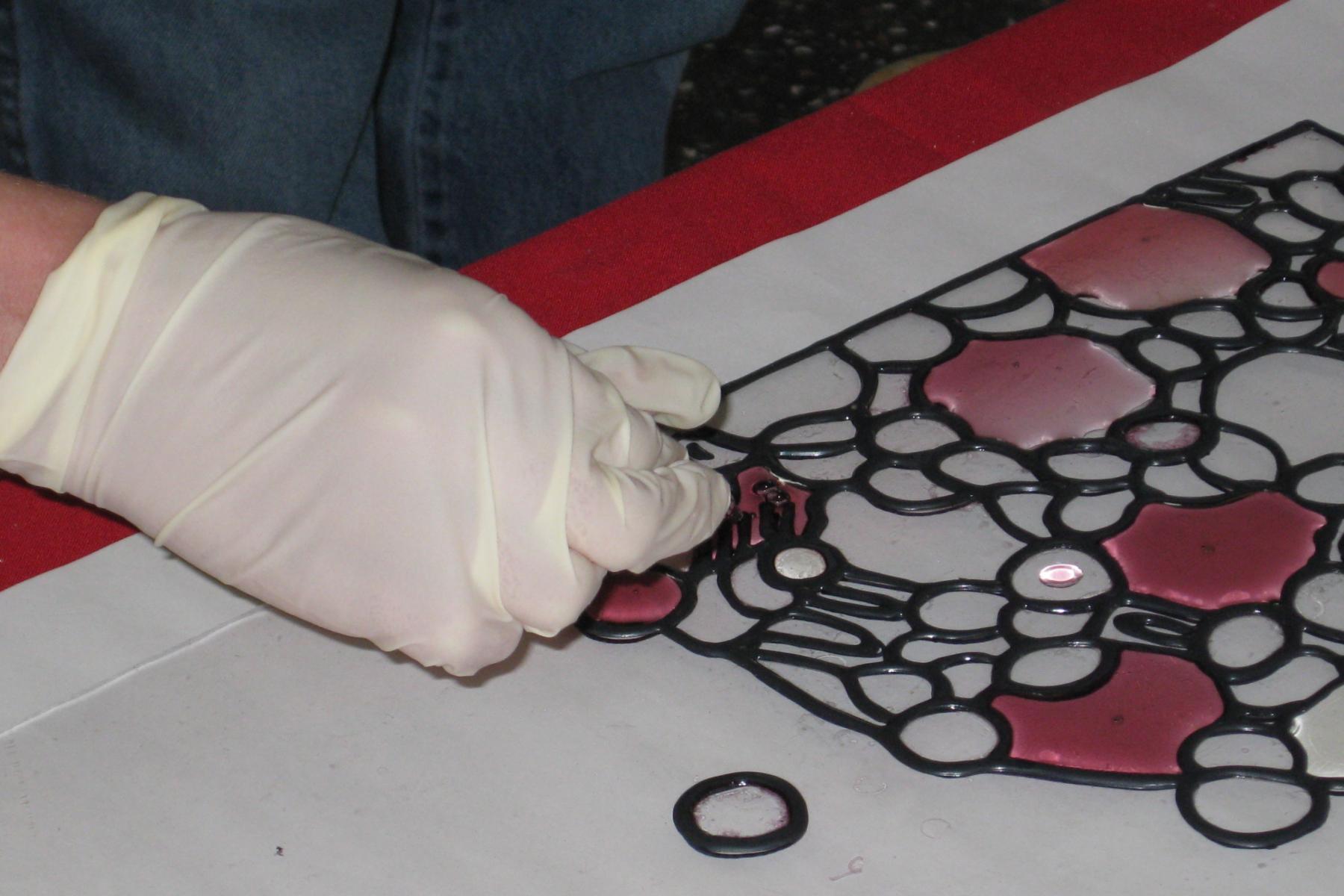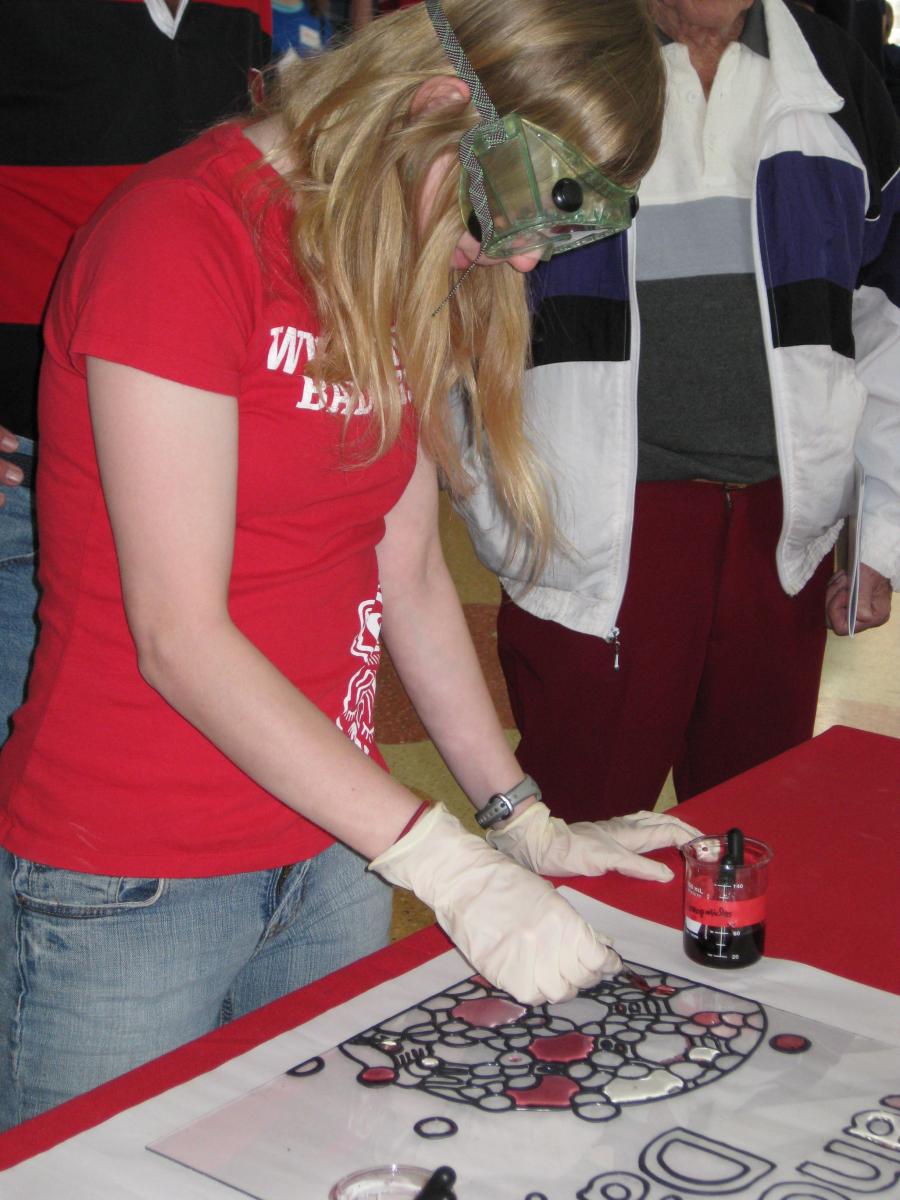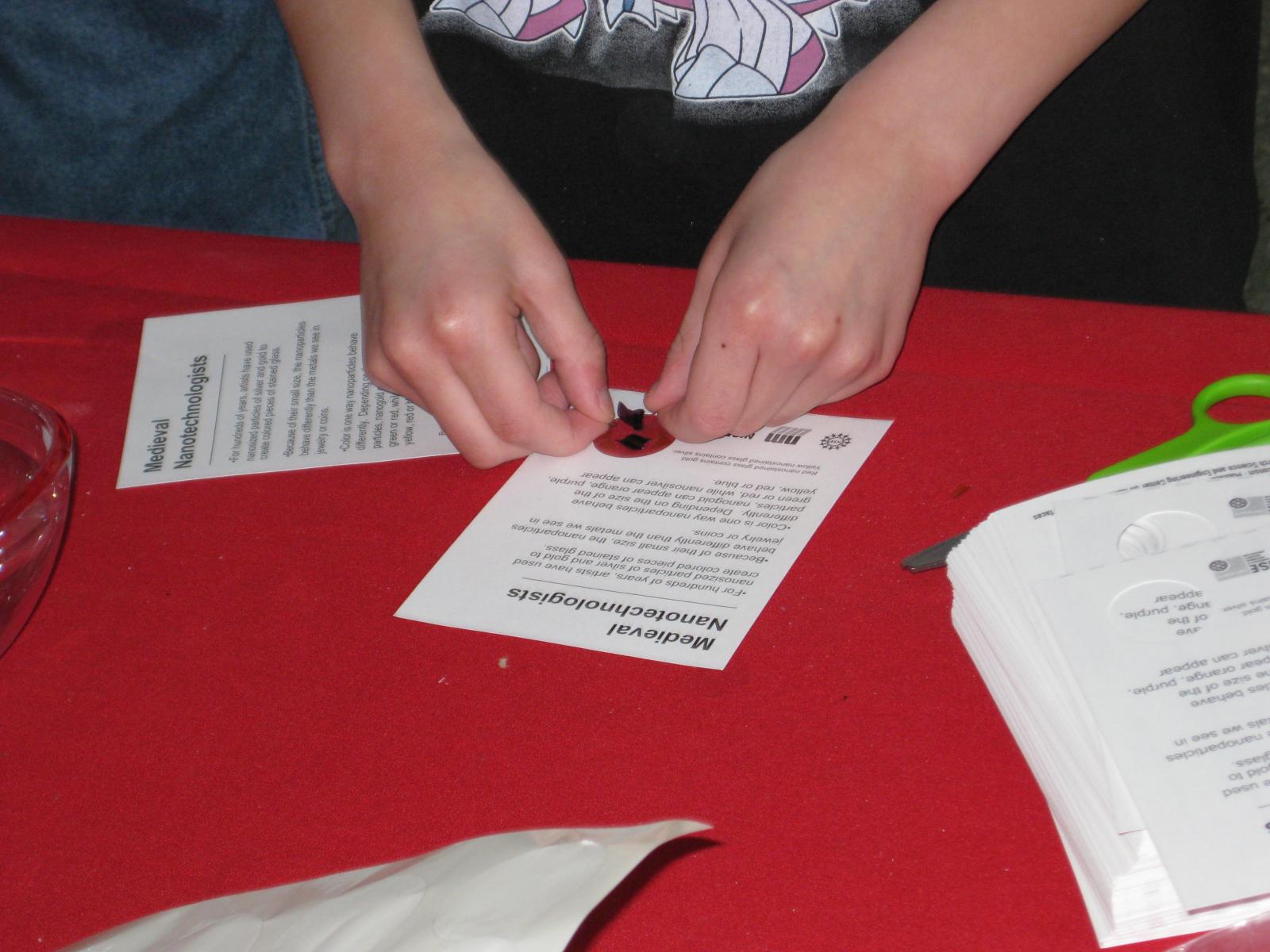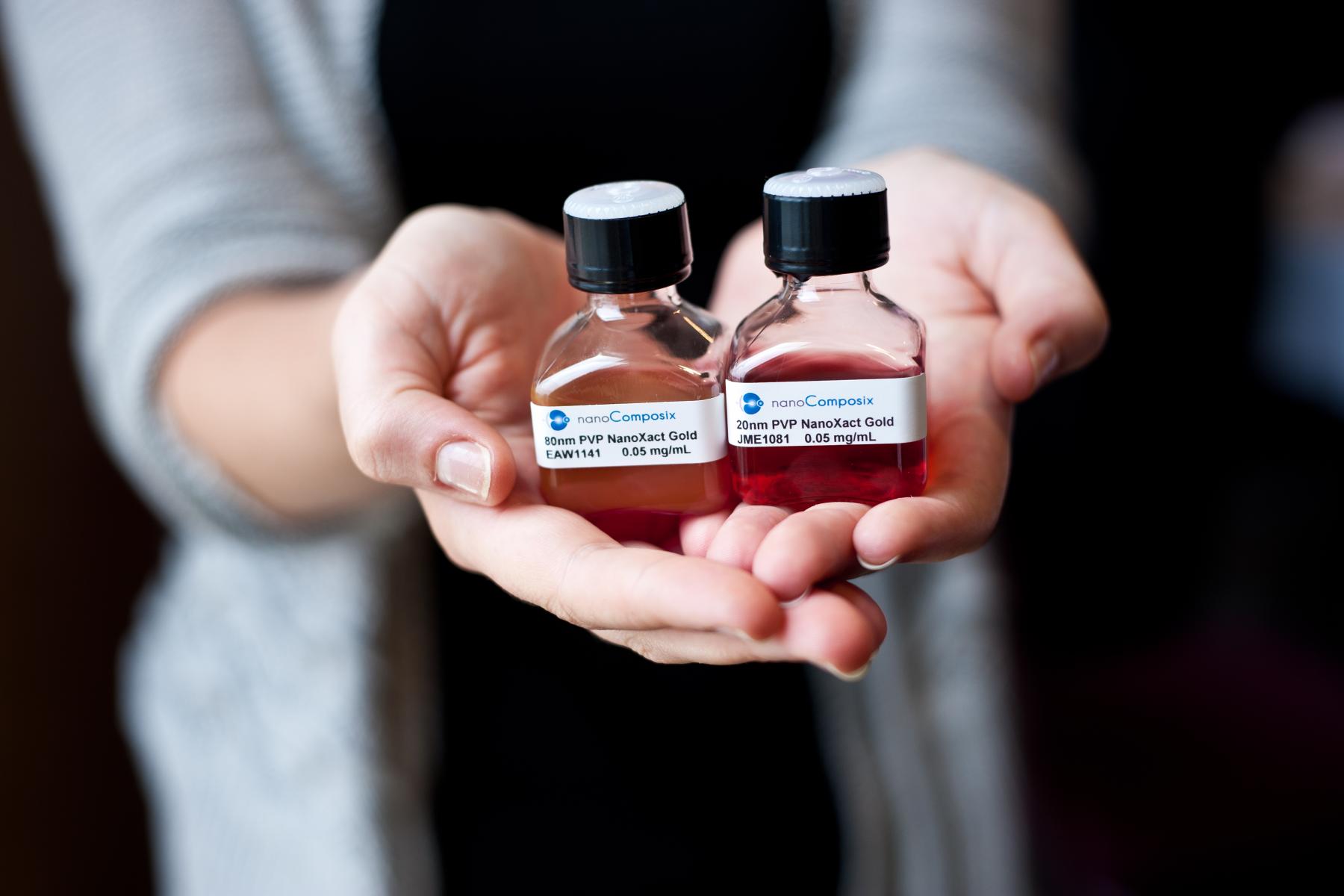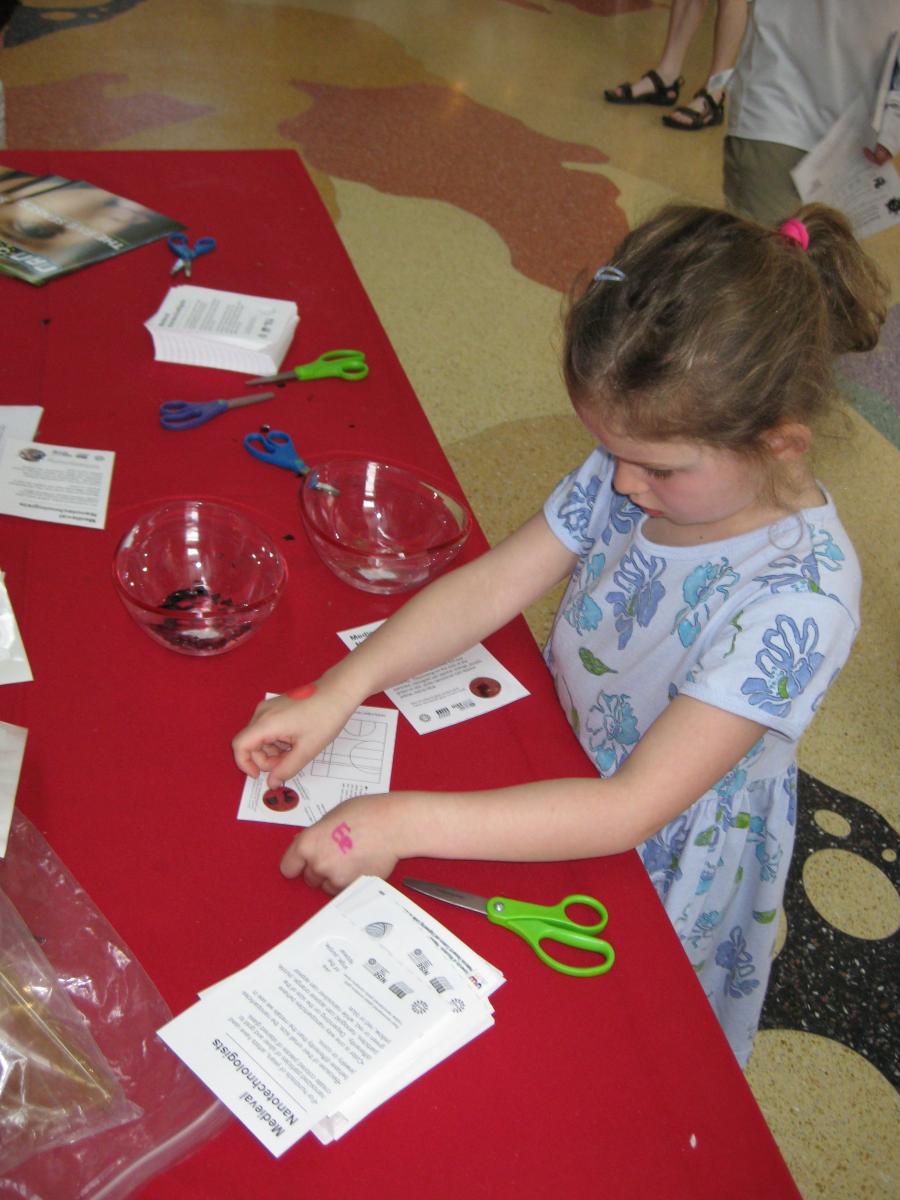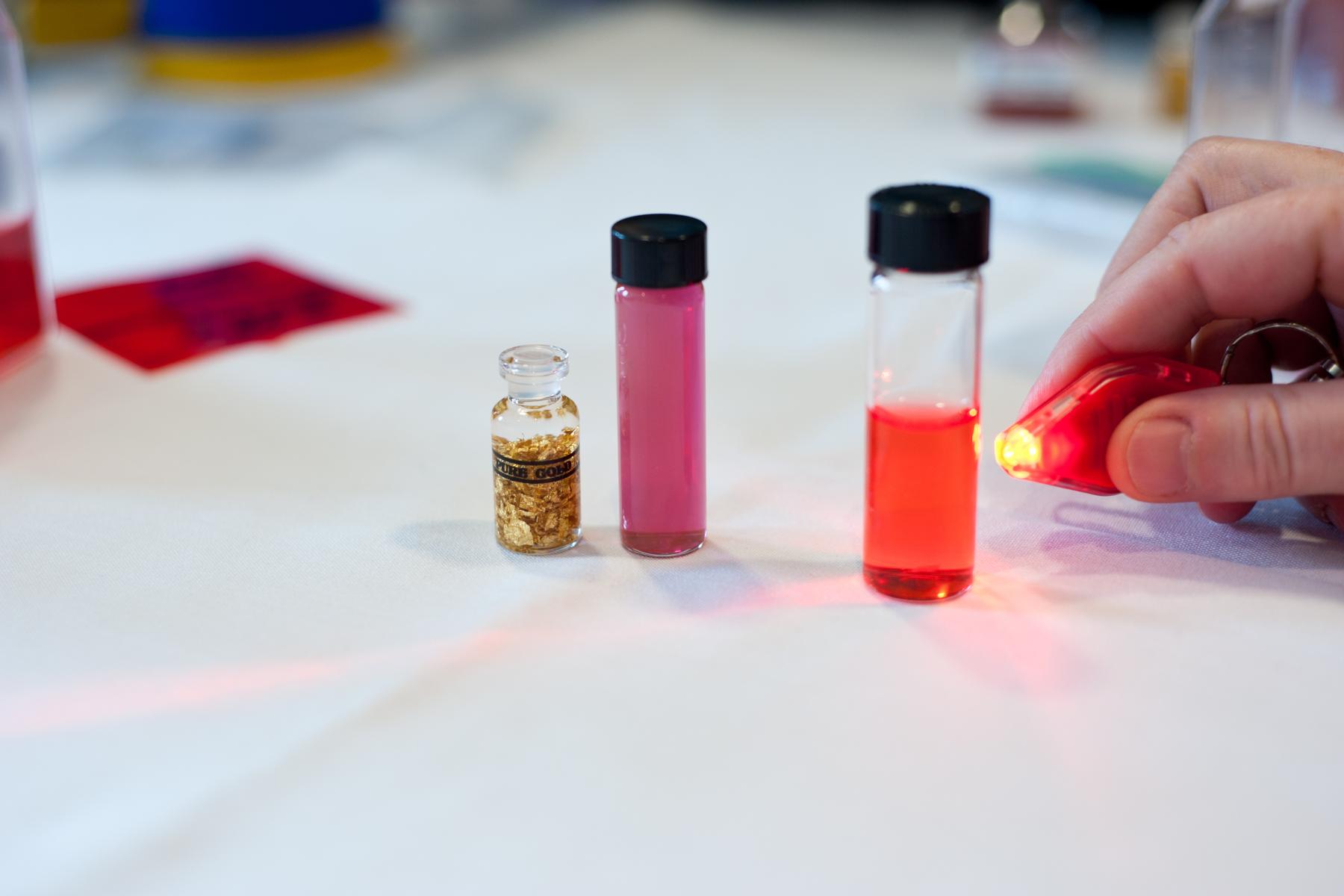DESCRIPTION
"Nanoparticle Stained Glass" is a cart demonstration that introduces the connection between medieval stained glass artisans and nanotechnology. Visitors learn that the red and yellow colors in stained glass windows come from nanoparticles of gold and silver embedded in the glass. During the program, visitors listen to a short presentation, and then have the opportunity to participate in two hands-on activities: making a collaborative stained glass window with pre-made nanoparticle solutions containing silver or gold and making a take-away card that contains a small piece of nanoparticle stained "glass".
DESCRIPTION
"Nanoparticle Stained Glass" is a cart demonstration that introduces the connection between medieval stained glass artisans and nanotechnology. Visitors learn that the red and yellow colors in stained glass windows come from nanoparticles of gold and silver embedded in the glass. During the program, visitors listen to a short presentation, and then have the opportunity to participate in two hands-on activities: making a collaborative stained glass window with pre-made nanoparticle solutions containing silver or gold and making a take-away card that contains a small piece of nanoparticle stained "glass".
TRAINING VIDEOS
OBJECTIVES
BIG IDEA
Interesting properties of gold and silver nanoparticles have been used for centuries by stained glass artisans.
LEARNING GOALS
Understand that nanoparticles of gold and silver behave differently than bulk gold and silver.
Appreciate the interconnection between science and art.
Learn that nanotechnology has been used since the Middle Ages, even though stained glass artisans did not know they were using this technology.
Realize that nanoscale effects occur in many places. Some are natural, everyday occurrences; others are the result of cutting-edge research.
Learn that many materials exhibit startling properties at the nanoscale.
NANO CONTENT MAP
Nanometer-sized things are very small, and often behave differently than larger things do.
Scientists and engineers have formed the interdisciplinary field of nanotechnology by investigating properties and manipulating matter at the nanoscale.
Credits
University of Wisconsin-Madison Materials Research Science and Engineering Center
Developed for the NISE Network with funding from the National Science Foundation under Award Numbers 0532536 and 0940143. Any opinions, findings, and conclusions or recommendations expressed in this product are those of the authors and do not necessarily reflect the views of the Foundation.
Creative Commons Attribution Non-Commercial Share Alike 3.0 United States (CC BY-NC-SA 3.0 US).
View more details

NISE Network products are developed through an iterative collaborative process that includes scientific review, peer review, and visitor evaluation in accordance with an inclusive audiences approach. Products are designed to be easily edited and adapted for different audiences under a Creative Commons Attribution Non-Commercial Share Alike license. To learn more, visit our Development Process page.

